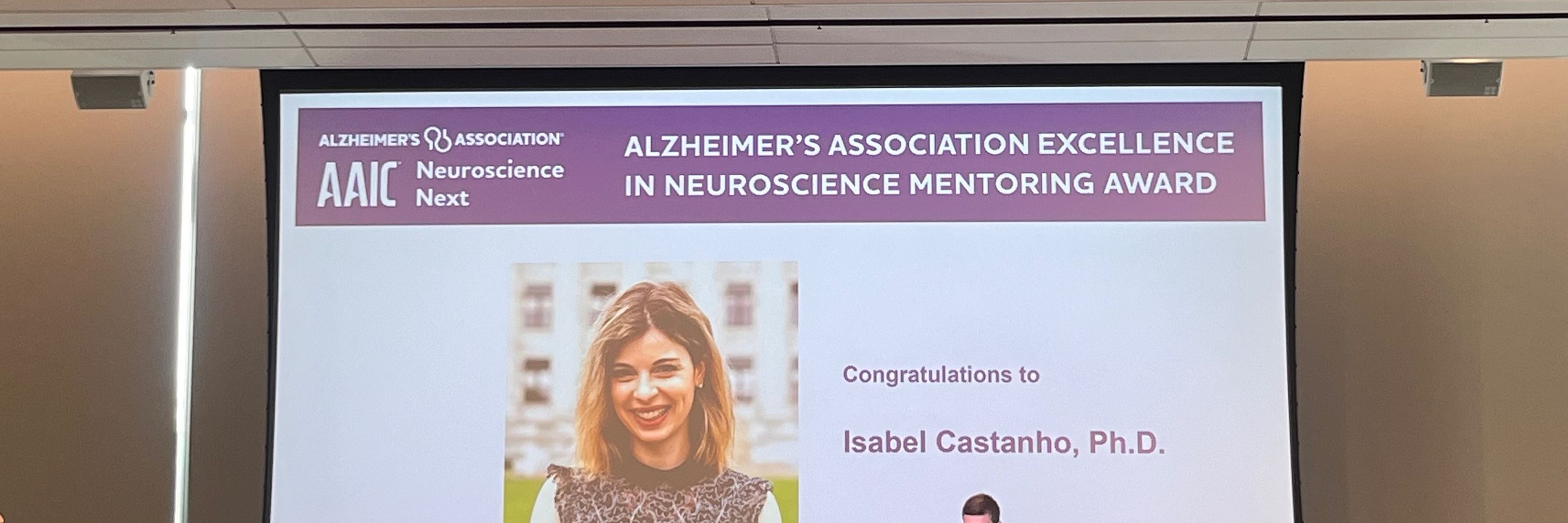
Isabel Castanho, PhD
@isabelscst.bsky.social
🧠Neurobiologist
🟣Alzheimer's disease & neurodegeneration
👩🏻💻Bioinformatics
🎙️Host She Has a PhD podcast
#womeninscience
📍Boston, US
💼 Junior Faculty @harvardmed.bsky.social
🇵🇹🇨🇦🇫🇮🇬🇧🇺🇸
🧘🏻♀️🎮📚📷☕🧳
🟣Alzheimer's disease & neurodegeneration
👩🏻💻Bioinformatics
🎙️Host She Has a PhD podcast
#womeninscience
📍Boston, US
💼 Junior Faculty @harvardmed.bsky.social
🇵🇹🇨🇦🇫🇮🇬🇧🇺🇸
🧘🏻♀️🎮📚📷☕🧳
Pinned

Molecular hallmarks of excitatory and inhibitory neuronal resilience to Alzheimer’s disease - Molecular Neurodegeneration
Background A significant proportion of individuals maintain cognition despite extensive Alzheimer’s disease (AD) pathology, known as cognitive resilience. Understanding the molecular mechanisms that protect these individuals could reveal therapeutic targets for AD. Methods This study defines molecular and cellular signatures of cognitive resilience by integrating bulk RNA and single-cell transcriptomic data with genetics across multiple brain regions. We analyzed data from the Religious Order Study and the Rush Memory and Aging Project (ROSMAP), including bulk RNA sequencing (n = 631 individuals) and multiregional single-nucleus RNA sequencing (n = 48 individuals). Subjects were categorized into AD, resilient, and control based on β-amyloid and tau pathology, and cognitive status. We identified and prioritized protected cell populations using whole-genome sequencing-derived genetic variants, transcriptomic profiling, and cellular composition. Results Transcriptomics and polygenic risk analysis position resilience as an intermediate AD state. Only GFAP and KLF4 expression distinguished resilience from controls at tissue level, whereas differential expression of genes involved in nucleic acid metabolism and signaling differentiated AD and resilient brains. At the cellular level, resilience was characterized by broad downregulation of LINGO1 expression and reorganization of chaperone pathways, specifically downregulation of Hsp90 and upregulation of Hsp40, Hsp70, and Hsp110 families in excitatory neurons. MEF2C, ATP8B1, and RELN emerged as key markers of resilient neurons. Excitatory neuronal subtypes in the entorhinal cortex (ATP8B+ and MEF2Chigh) exhibited unique resilience signaling through activation of neurotrophin (BDNF-NTRK2, modulated by LINGO1) and angiopoietin (ANGPT2-TEK) pathways. MEF2C+ inhibitory neurons were over-represented in resilient brains, and the expression of genes associated with rare genetic variants revealed vulnerable somatostatin (SST) cortical interneurons that survive in AD resilience. The maintenance of excitatory-inhibitory balance emerges as a key characteristic of resilience. Conclusions We have defined molecular and cellular hallmarks of cognitive resilience, an intermediate state in the AD continuum. Resilience mechanisms include preserved neuronal function, balanced network activity, and activation of neurotrophic survival signaling. Specific excitatory neuronal populations appear to play a central role in mediating cognitive resilience, while a subset of vulnerable interneurons likely provides compensation against AD-associated hyperexcitability. This study offers a framework to leverage natural protective mechanisms to mitigate neurodegeneration and preserve cognition in AD.
link.springer.com
Thrilled to share that our paper “Molecular hallmarks of excitatory and inhibitory neuronal resilience to Alzheimer’s disease” is now out in Molecular Neurodegeneration!
👉 link.springer.com/article/10.1...
#Alzheimer #Resilience #Neuroscience
👉 link.springer.com/article/10.1...
#Alzheimer #Resilience #Neuroscience
Looking forward to this debate! 👇🏻 Join us! 📢
Is AI bridging gaps or building barriers in healthcare and research? Join Dr @isabelscst.bsky.social & Dr Eleanor Conole for a live debate on 12 Nov at 8pm. Vote and decide! #DementiaResearcher #AI
communities.dementiaresearcher.nihr.ac.uk/c/events/deb...
communities.dementiaresearcher.nihr.ac.uk/c/events/deb...
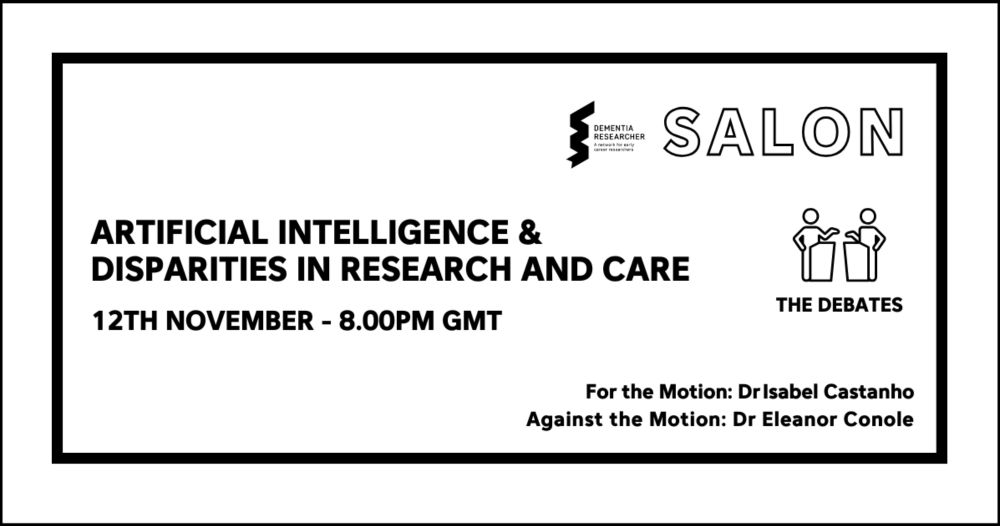
Dementia Researcher Salon Debate - AI and Disparities in Research and Care
Dementia Researcher Salon Debate - AI and Disparities in Research and Care
communities.dementiaresearcher.nihr.ac.uk
November 8, 2025 at 1:59 PM
Looking forward to this debate! 👇🏻 Join us! 📢
Interesting study: www.biorxiv.org/content/10.1...
The authors "used Octodon degus, a rodent with exceptional longevity (up to 10 years in laboratory conditions), as a natural model of aging and neurodegenerative disease"
💡"preserved GABAergic function supports cognitive resilience in aging degus"
The authors "used Octodon degus, a rodent with exceptional longevity (up to 10 years in laboratory conditions), as a natural model of aging and neurodegenerative disease"
💡"preserved GABAergic function supports cognitive resilience in aging degus"
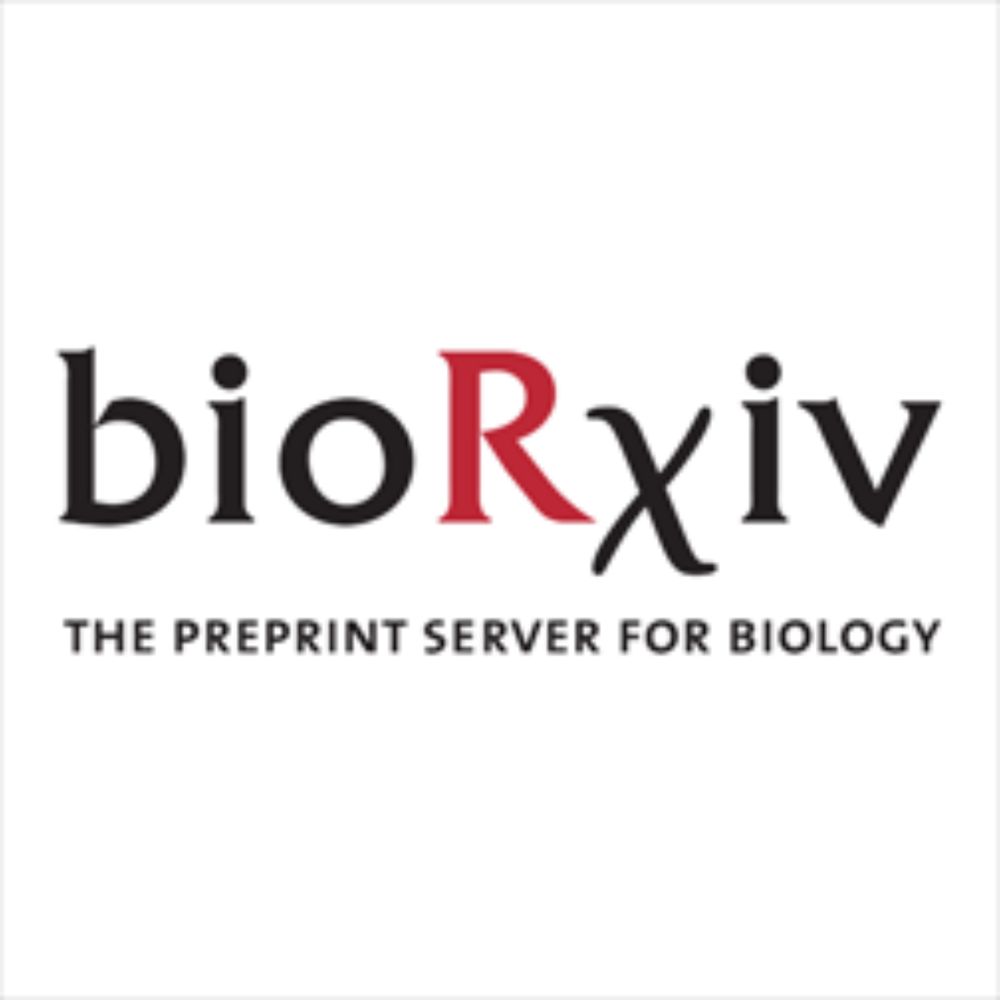
Cognitive Resilience in Aging Degus is Linked to CA3 Hippocampal GABAergic Integrity
The preservation of cognitive function during aging remains a key challenge in neuroscience. In this study, we applied an integrative approach, combining behavioral assays with neurophysiological reco...
www.biorxiv.org
October 20, 2025 at 1:18 PM
Interesting study: www.biorxiv.org/content/10.1...
The authors "used Octodon degus, a rodent with exceptional longevity (up to 10 years in laboratory conditions), as a natural model of aging and neurodegenerative disease"
💡"preserved GABAergic function supports cognitive resilience in aging degus"
The authors "used Octodon degus, a rodent with exceptional longevity (up to 10 years in laboratory conditions), as a natural model of aging and neurodegenerative disease"
💡"preserved GABAergic function supports cognitive resilience in aging degus"
Reposted by Isabel Castanho, PhD
I am honored to celebrate our publication. I work together with these future leaders in Alzheimer's research. Will AD become a controllable disease? If we can find our natural defensives and make them stronger?
Thrilled to share that our paper “Molecular hallmarks of excitatory and inhibitory neuronal resilience to Alzheimer’s disease” is now out in Molecular Neurodegeneration!
👉 link.springer.com/article/10.1...
#Alzheimer #Resilience #Neuroscience
👉 link.springer.com/article/10.1...
#Alzheimer #Resilience #Neuroscience

Molecular hallmarks of excitatory and inhibitory neuronal resilience to Alzheimer’s disease - Molecular Neurodegeneration
Background A significant proportion of individuals maintain cognition despite extensive Alzheimer’s disease (AD) pathology, known as cognitive resilience. Understanding the molecular mechanisms that protect these individuals could reveal therapeutic targets for AD. Methods This study defines molecular and cellular signatures of cognitive resilience by integrating bulk RNA and single-cell transcriptomic data with genetics across multiple brain regions. We analyzed data from the Religious Order Study and the Rush Memory and Aging Project (ROSMAP), including bulk RNA sequencing (n = 631 individuals) and multiregional single-nucleus RNA sequencing (n = 48 individuals). Subjects were categorized into AD, resilient, and control based on β-amyloid and tau pathology, and cognitive status. We identified and prioritized protected cell populations using whole-genome sequencing-derived genetic variants, transcriptomic profiling, and cellular composition. Results Transcriptomics and polygenic risk analysis position resilience as an intermediate AD state. Only GFAP and KLF4 expression distinguished resilience from controls at tissue level, whereas differential expression of genes involved in nucleic acid metabolism and signaling differentiated AD and resilient brains. At the cellular level, resilience was characterized by broad downregulation of LINGO1 expression and reorganization of chaperone pathways, specifically downregulation of Hsp90 and upregulation of Hsp40, Hsp70, and Hsp110 families in excitatory neurons. MEF2C, ATP8B1, and RELN emerged as key markers of resilient neurons. Excitatory neuronal subtypes in the entorhinal cortex (ATP8B+ and MEF2Chigh) exhibited unique resilience signaling through activation of neurotrophin (BDNF-NTRK2, modulated by LINGO1) and angiopoietin (ANGPT2-TEK) pathways. MEF2C+ inhibitory neurons were over-represented in resilient brains, and the expression of genes associated with rare genetic variants revealed vulnerable somatostatin (SST) cortical interneurons that survive in AD resilience. The maintenance of excitatory-inhibitory balance emerges as a key characteristic of resilience. Conclusions We have defined molecular and cellular hallmarks of cognitive resilience, an intermediate state in the AD continuum. Resilience mechanisms include preserved neuronal function, balanced network activity, and activation of neurotrophic survival signaling. Specific excitatory neuronal populations appear to play a central role in mediating cognitive resilience, while a subset of vulnerable interneurons likely provides compensation against AD-associated hyperexcitability. This study offers a framework to leverage natural protective mechanisms to mitigate neurodegeneration and preserve cognition in AD.
link.springer.com
October 3, 2025 at 1:51 PM
I am honored to celebrate our publication. I work together with these future leaders in Alzheimer's research. Will AD become a controllable disease? If we can find our natural defensives and make them stronger?
Reposted by Isabel Castanho, PhD
'Molecular hallmarks of excitatory and inhibitory neuronal resilience to #AlzheimersDisease'
Isabel Castanho, Pourya Naderi Yeganeh...Rudolph E. Tanzi & Winston Hide @winhide.bsky.social @harvardmed.bsky.social
#CognitiveResilience #transcriptomics #genetics
bit.ly/3VK7k5b
Isabel Castanho, Pourya Naderi Yeganeh...Rudolph E. Tanzi & Winston Hide @winhide.bsky.social @harvardmed.bsky.social
#CognitiveResilience #transcriptomics #genetics
bit.ly/3VK7k5b

Molecular hallmarks of excitatory and inhibitory neuronal resilience to Alzheimer’s disease - Molecular Neurodegeneration
Background A significant proportion of individuals maintain cognition despite extensive Alzheimer’s disease (AD) pathology, known as cognitive resilience. Understanding the molecular mechanisms that protect these individuals could reveal therapeutic targets for AD. Methods This study defines molecular and cellular signatures of cognitive resilience by integrating bulk RNA and single-cell transcriptomic data with genetics across multiple brain regions. We analyzed data from the Religious Order Study and the Rush Memory and Aging Project (ROSMAP), including bulk RNA sequencing (n = 631 individuals) and multiregional single-nucleus RNA sequencing (n = 48 individuals). Subjects were categorized into AD, resilient, and control based on β-amyloid and tau pathology, and cognitive status. We identified and prioritized protected cell populations using whole-genome sequencing-derived genetic variants, transcriptomic profiling, and cellular composition. Results Transcriptomics and polygenic risk analysis position resilience as an intermediate AD state. Only GFAP and KLF4 expression distinguished resilience from controls at tissue level, whereas differential expression of genes involved in nucleic acid metabolism and signaling differentiated AD and resilient brains. At the cellular level, resilience was characterized by broad downregulation of LINGO1 expression and reorganization of chaperone pathways, specifically downregulation of Hsp90 and upregulation of Hsp40, Hsp70, and Hsp110 families in excitatory neurons. MEF2C, ATP8B1, and RELN emerged as key markers of resilient neurons. Excitatory neuronal subtypes in the entorhinal cortex (ATP8B+ and MEF2Chigh) exhibited unique resilience signaling through activation of neurotrophin (BDNF-NTRK2, modulated by LINGO1) and angiopoietin (ANGPT2-TEK) pathways. MEF2C+ inhibitory neurons were over-represented in resilient brains, and the expression of genes associated with rare genetic variants revealed vulnerable somatostatin (SST) cortical interneurons that survive in AD resilience. The maintenance of excitatory-inhibitory balance emerges as a key characteristic of resilience. Conclusions We have defined molecular and cellular hallmarks of cognitive resilience, an intermediate state in the AD continuum. Resilience mechanisms include preserved neuronal function, balanced network activity, and activation of neurotrophic survival signaling. Specific excitatory neuronal populations appear to play a central role in mediating cognitive resilience, while a subset of vulnerable interneurons likely provides compensation against AD-associated hyperexcitability. This study offers a framework to leverage natural protective mechanisms to mitigate neurodegeneration and preserve cognition in AD.
molecularneurodegeneration.biomedcentral.com
October 1, 2025 at 2:29 PM
'Molecular hallmarks of excitatory and inhibitory neuronal resilience to #AlzheimersDisease'
Isabel Castanho, Pourya Naderi Yeganeh...Rudolph E. Tanzi & Winston Hide @winhide.bsky.social @harvardmed.bsky.social
#CognitiveResilience #transcriptomics #genetics
bit.ly/3VK7k5b
Isabel Castanho, Pourya Naderi Yeganeh...Rudolph E. Tanzi & Winston Hide @winhide.bsky.social @harvardmed.bsky.social
#CognitiveResilience #transcriptomics #genetics
bit.ly/3VK7k5b
Thrilled to share that our paper “Molecular hallmarks of excitatory and inhibitory neuronal resilience to Alzheimer’s disease” is now out in Molecular Neurodegeneration!
👉 link.springer.com/article/10.1...
#Alzheimer #Resilience #Neuroscience
👉 link.springer.com/article/10.1...
#Alzheimer #Resilience #Neuroscience

Molecular hallmarks of excitatory and inhibitory neuronal resilience to Alzheimer’s disease - Molecular Neurodegeneration
Background A significant proportion of individuals maintain cognition despite extensive Alzheimer’s disease (AD) pathology, known as cognitive resilience. Understanding the molecular mechanisms that protect these individuals could reveal therapeutic targets for AD. Methods This study defines molecular and cellular signatures of cognitive resilience by integrating bulk RNA and single-cell transcriptomic data with genetics across multiple brain regions. We analyzed data from the Religious Order Study and the Rush Memory and Aging Project (ROSMAP), including bulk RNA sequencing (n = 631 individuals) and multiregional single-nucleus RNA sequencing (n = 48 individuals). Subjects were categorized into AD, resilient, and control based on β-amyloid and tau pathology, and cognitive status. We identified and prioritized protected cell populations using whole-genome sequencing-derived genetic variants, transcriptomic profiling, and cellular composition. Results Transcriptomics and polygenic risk analysis position resilience as an intermediate AD state. Only GFAP and KLF4 expression distinguished resilience from controls at tissue level, whereas differential expression of genes involved in nucleic acid metabolism and signaling differentiated AD and resilient brains. At the cellular level, resilience was characterized by broad downregulation of LINGO1 expression and reorganization of chaperone pathways, specifically downregulation of Hsp90 and upregulation of Hsp40, Hsp70, and Hsp110 families in excitatory neurons. MEF2C, ATP8B1, and RELN emerged as key markers of resilient neurons. Excitatory neuronal subtypes in the entorhinal cortex (ATP8B+ and MEF2Chigh) exhibited unique resilience signaling through activation of neurotrophin (BDNF-NTRK2, modulated by LINGO1) and angiopoietin (ANGPT2-TEK) pathways. MEF2C+ inhibitory neurons were over-represented in resilient brains, and the expression of genes associated with rare genetic variants revealed vulnerable somatostatin (SST) cortical interneurons that survive in AD resilience. The maintenance of excitatory-inhibitory balance emerges as a key characteristic of resilience. Conclusions We have defined molecular and cellular hallmarks of cognitive resilience, an intermediate state in the AD continuum. Resilience mechanisms include preserved neuronal function, balanced network activity, and activation of neurotrophic survival signaling. Specific excitatory neuronal populations appear to play a central role in mediating cognitive resilience, while a subset of vulnerable interneurons likely provides compensation against AD-associated hyperexcitability. This study offers a framework to leverage natural protective mechanisms to mitigate neurodegeneration and preserve cognition in AD.
link.springer.com
October 1, 2025 at 7:45 PM
Thrilled to share that our paper “Molecular hallmarks of excitatory and inhibitory neuronal resilience to Alzheimer’s disease” is now out in Molecular Neurodegeneration!
👉 link.springer.com/article/10.1...
#Alzheimer #Resilience #Neuroscience
👉 link.springer.com/article/10.1...
#Alzheimer #Resilience #Neuroscience
Reposted by Isabel Castanho, PhD
🤖 Is #AI helping close gaps in research and care, or making disparities worse?
Join @isabelscst.bsky.social & Dr Eleanor Conole for a live debate on 12 Nov at 8pm GMT.
🗳 Vote, question, decide.
communities.dementiaresearcher.nihr.ac.uk/c/events/deb...
Join @isabelscst.bsky.social & Dr Eleanor Conole for a live debate on 12 Nov at 8pm GMT.
🗳 Vote, question, decide.
communities.dementiaresearcher.nihr.ac.uk/c/events/deb...

Dementia Researcher Salon Debate - AI and Disparities in Research and Care
Dementia Researcher Salon Debate - AI and Disparities in Research and Care
communities.dementiaresearcher.nihr.ac.uk
September 16, 2025 at 2:08 PM
🤖 Is #AI helping close gaps in research and care, or making disparities worse?
Join @isabelscst.bsky.social & Dr Eleanor Conole for a live debate on 12 Nov at 8pm GMT.
🗳 Vote, question, decide.
communities.dementiaresearcher.nihr.ac.uk/c/events/deb...
Join @isabelscst.bsky.social & Dr Eleanor Conole for a live debate on 12 Nov at 8pm GMT.
🗳 Vote, question, decide.
communities.dementiaresearcher.nihr.ac.uk/c/events/deb...
Reposted by Isabel Castanho, PhD
The Penn Neurodegeneration Genomics Center seeks an Associate or Full Professor to lead Alzheimer’s genomics research and teaching within its world leading multidisciplinary team. Closing date: 5th October
www.dementiaresearcher.nihr.ac.uk/job/professo...
www.dementiaresearcher.nihr.ac.uk/job/professo...

Professor: Alzheimer’s Genetics & Genomics / Neuropathology & Neurodegeneration
The Penn Neurodegeneration Genomics Center seeks an Associate or Full Prof to lead Alzheimer’s genomics research and teaching within its multidisciplinary team.
www.dementiaresearcher.nihr.ac.uk
August 6, 2025 at 10:38 PM
The Penn Neurodegeneration Genomics Center seeks an Associate or Full Professor to lead Alzheimer’s genomics research and teaching within its world leading multidisciplinary team. Closing date: 5th October
www.dementiaresearcher.nihr.ac.uk/job/professo...
www.dementiaresearcher.nihr.ac.uk/job/professo...
Reposted by Isabel Castanho, PhD
We're looking for speakers! This October and November, our Salon Webinars will feature debates on big issues in academic careers and dementia research. Fancy taking part?
🔗 8k3qel8nuxc.typeform.com/SalonDebates
🔗 8k3qel8nuxc.typeform.com/SalonDebates
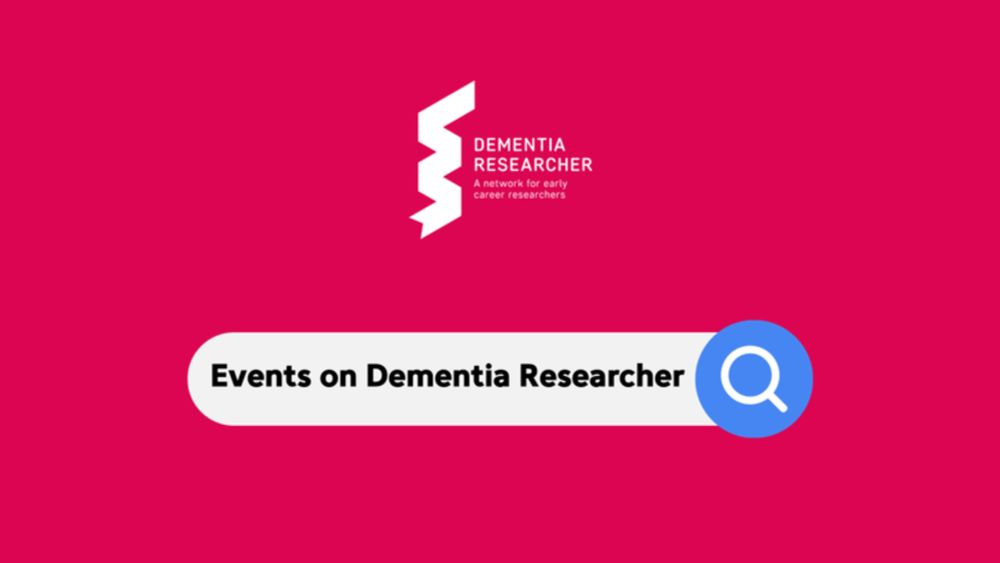
Salon Debates
Dementia Researcher Salon - Debates
8k3qel8nuxc.typeform.com
August 5, 2025 at 10:38 AM
We're looking for speakers! This October and November, our Salon Webinars will feature debates on big issues in academic careers and dementia research. Fancy taking part?
🔗 8k3qel8nuxc.typeform.com/SalonDebates
🔗 8k3qel8nuxc.typeform.com/SalonDebates
Proud to share my first co-last/co-corresponding manuscript (preprint): DNA methylation shifts in tau & Aβ mice 🧬🐁
This work started during my PhD at @exeter.ac.uk (outstanding mentor: Prof Jonathan Mill) & was led forward by Szi Kay Leung, now a superstar postdoc ⭐
www.biorxiv.org/content/10.1...
This work started during my PhD at @exeter.ac.uk (outstanding mentor: Prof Jonathan Mill) & was led forward by Szi Kay Leung, now a superstar postdoc ⭐
www.biorxiv.org/content/10.1...

Methylomic signatures of tau and amyloid-beta in transgenic mouse models of Alzheimer’s disease neuropathology
Alzheimer’s disease (AD) is characterized by progressive neurodegeneration driven by tau and amyloid-β (Aβ) pathology. Emerging evidence implicates a role for epigenetic modifications, particularly al...
www.biorxiv.org
August 5, 2025 at 1:12 PM
Proud to share my first co-last/co-corresponding manuscript (preprint): DNA methylation shifts in tau & Aβ mice 🧬🐁
This work started during my PhD at @exeter.ac.uk (outstanding mentor: Prof Jonathan Mill) & was led forward by Szi Kay Leung, now a superstar postdoc ⭐
www.biorxiv.org/content/10.1...
This work started during my PhD at @exeter.ac.uk (outstanding mentor: Prof Jonathan Mill) & was led forward by Szi Kay Leung, now a superstar postdoc ⭐
www.biorxiv.org/content/10.1...
Reposted by Isabel Castanho, PhD
#AAIC25 was a blast!
🧠 Gave a talk during the Molecular Basis of Cognitive Resilience Session, followed by a great discussion
@isabelscst.bsky.social @susanrohde.bsky.social @baldassogabi.bsky.social
#TainLuquez
Feeling really energized about where this field is headed 🤓
🧠 Gave a talk during the Molecular Basis of Cognitive Resilience Session, followed by a great discussion
@isabelscst.bsky.social @susanrohde.bsky.social @baldassogabi.bsky.social
#TainLuquez
Feeling really energized about where this field is headed 🤓
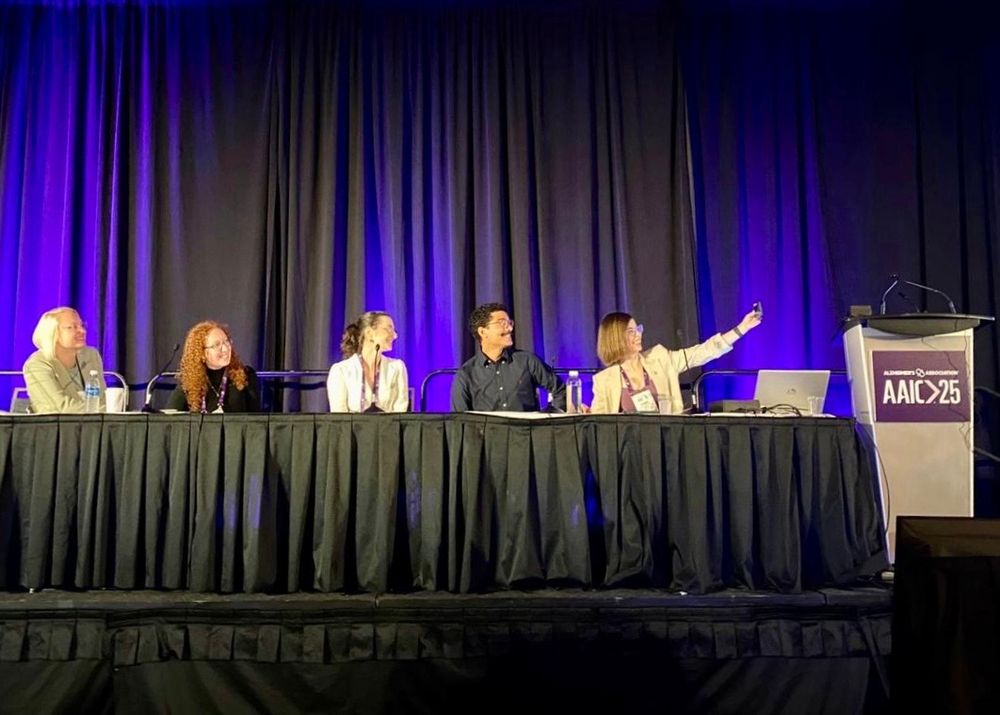

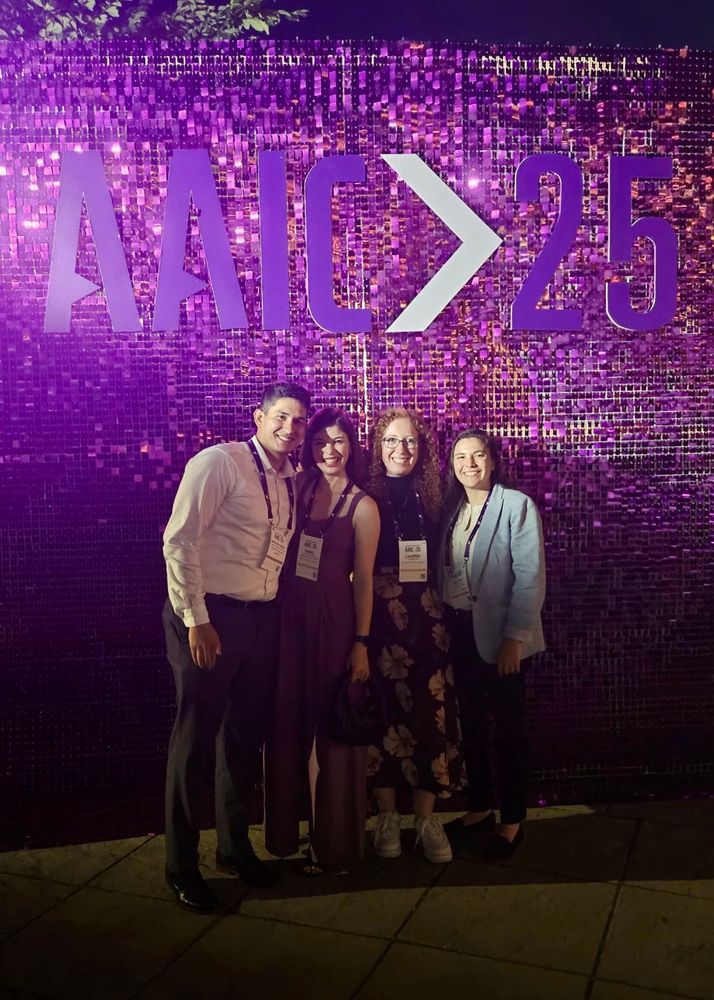
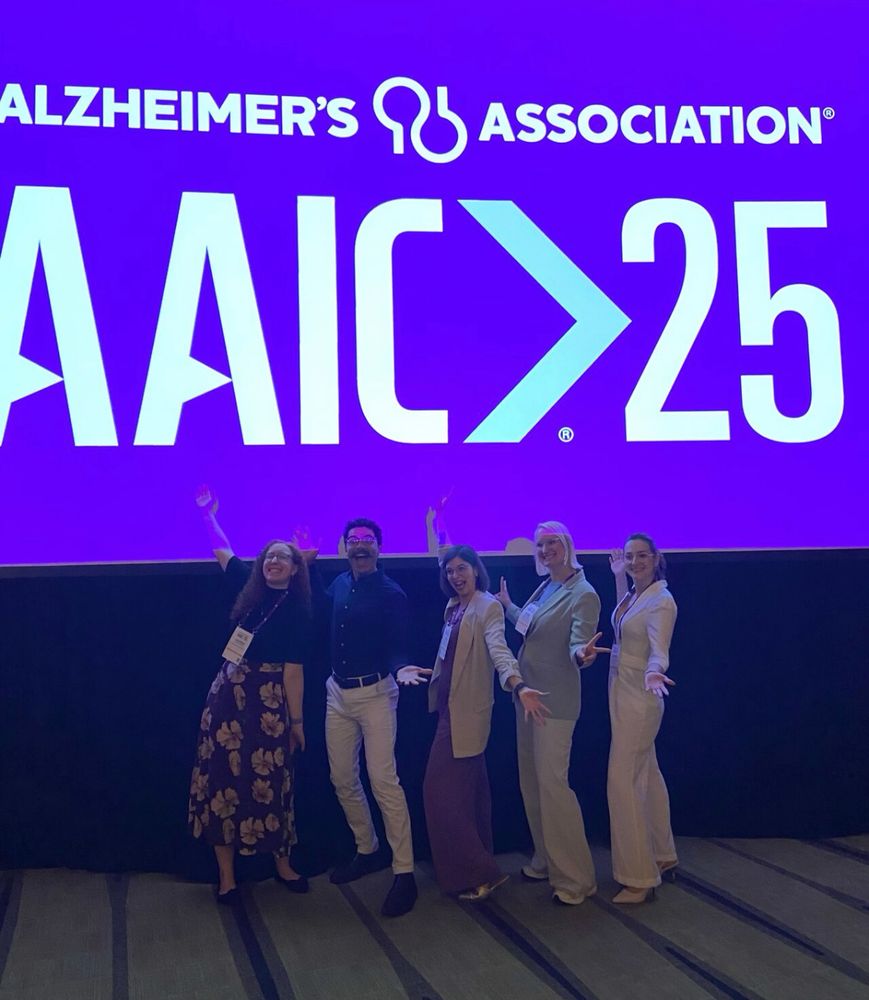
August 3, 2025 at 5:47 PM
#AAIC25 was a blast!
🧠 Gave a talk during the Molecular Basis of Cognitive Resilience Session, followed by a great discussion
@isabelscst.bsky.social @susanrohde.bsky.social @baldassogabi.bsky.social
#TainLuquez
Feeling really energized about where this field is headed 🤓
🧠 Gave a talk during the Molecular Basis of Cognitive Resilience Session, followed by a great discussion
@isabelscst.bsky.social @susanrohde.bsky.social @baldassogabi.bsky.social
#TainLuquez
Feeling really energized about where this field is headed 🤓
Now that #AAIC25 - the biggest international conference on #Alzheimers & #dementia - ended, I'm still processing all that I experienced, learned, & absorbed this past week. What a week!
Looking forward to London next year, where my story as an @istaart.bsky.social ambassador began 💜
#EndAlz
Looking forward to London next year, where my story as an @istaart.bsky.social ambassador began 💜
#EndAlz
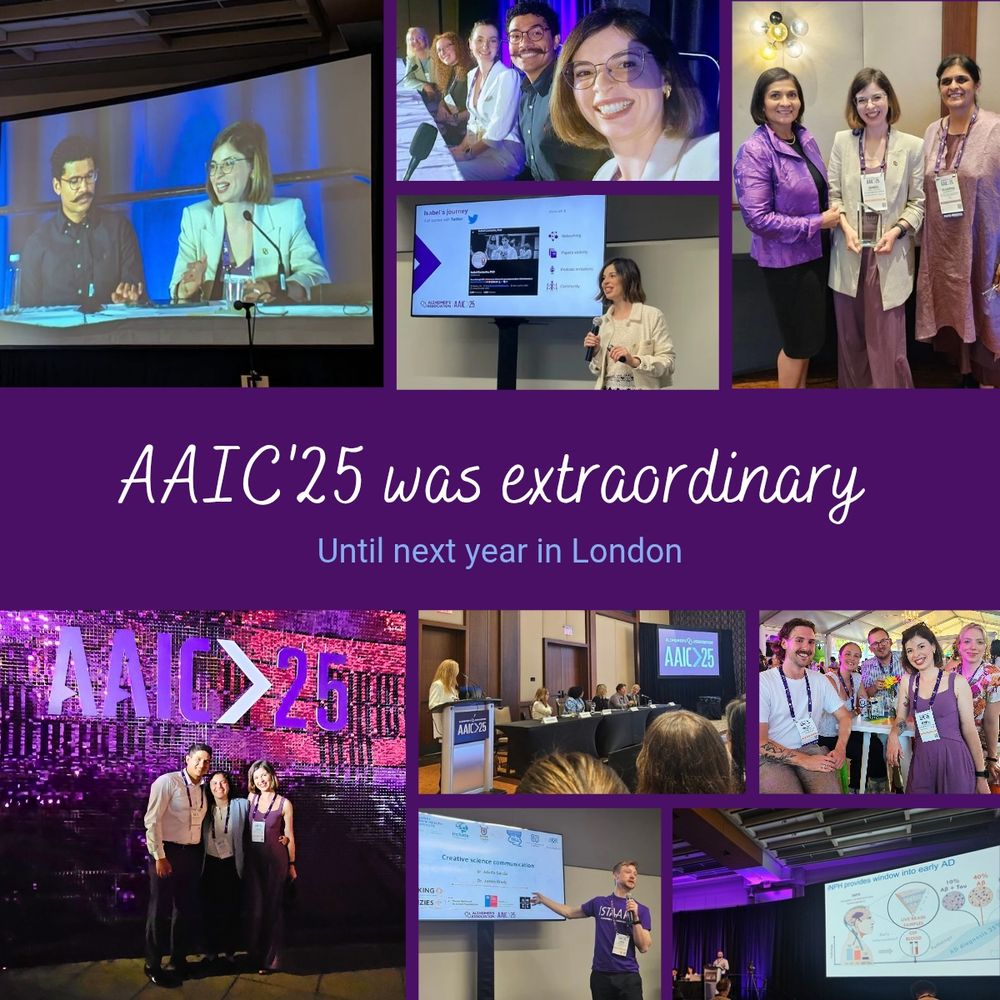
August 1, 2025 at 12:01 PM
Now that #AAIC25 - the biggest international conference on #Alzheimers & #dementia - ended, I'm still processing all that I experienced, learned, & absorbed this past week. What a week!
Looking forward to London next year, where my story as an @istaart.bsky.social ambassador began 💜
#EndAlz
Looking forward to London next year, where my story as an @istaart.bsky.social ambassador began 💜
#EndAlz
Reposted by Isabel Castanho, PhD
US based scientists: Keep writing grants. Keep writing papers. Keep doing research.
Keep on keeping on.
Remember why you do the work you do. ✊🏼 🧪
Keep on keeping on.
Remember why you do the work you do. ✊🏼 🧪
July 31, 2025 at 5:29 PM
US based scientists: Keep writing grants. Keep writing papers. Keep doing research.
Keep on keeping on.
Remember why you do the work you do. ✊🏼 🧪
Keep on keeping on.
Remember why you do the work you do. ✊🏼 🧪
Reposted by Isabel Castanho, PhD
Exclusive offer for #AAIC25 attendees: Join @istaart.bsky.social as a new member during AAIC to receive 10% off membership dues! Stop by the Alzheimer's Association booth in the Exhibit Hall or visit alz.org/ISTAART to join.

July 30, 2025 at 4:25 PM
Exclusive offer for #AAIC25 attendees: Join @istaart.bsky.social as a new member during AAIC to receive 10% off membership dues! Stop by the Alzheimer's Association booth in the Exhibit Hall or visit alz.org/ISTAART to join.
Reposted by Isabel Castanho, PhD
Excited to start my bluesky journey after attending #ISTAART Skills Workshop: Amplifying Your Scientific Profile Through Social Media hosted by @isabelscst.bsky.social, @caitlynfastenau.bsky.social, and Lisa!
#AAIC25
#AAIC25
July 30, 2025 at 6:53 PM
Excited to start my bluesky journey after attending #ISTAART Skills Workshop: Amplifying Your Scientific Profile Through Social Media hosted by @isabelscst.bsky.social, @caitlynfastenau.bsky.social, and Lisa!
#AAIC25
#AAIC25
Reposted by Isabel Castanho, PhD
Our second #AAIC25 special is live! Dr James Brady with @stirlandia.bsky.social, @isabelscst.bsky.social & @felixwittmann.bsky.social. Video & audio streaming now.
pod.fo/e/304afe
pod.fo/e/304afe

July 29, 2025 at 1:17 PM
Our second #AAIC25 special is live! Dr James Brady with @stirlandia.bsky.social, @isabelscst.bsky.social & @felixwittmann.bsky.social. Video & audio streaming now.
pod.fo/e/304afe
pod.fo/e/304afe
Reposted by Isabel Castanho, PhD
@mariacarrilloalz.bsky.social shares exciting #AAIC25 attendee stats:
🔬 Nearly 8,200 are in Toronto & 3,200+ are online
🔬48% of in-person attendees & 61% of virtual attendees are women
🔬 23% are under age 35
🔬 More than 22% are first-time attendees
🔬More than 70% are @istaart.bsky.social members
🔬 Nearly 8,200 are in Toronto & 3,200+ are online
🔬48% of in-person attendees & 61% of virtual attendees are women
🔬 23% are under age 35
🔬 More than 22% are first-time attendees
🔬More than 70% are @istaart.bsky.social members

July 28, 2025 at 3:20 PM
@mariacarrilloalz.bsky.social shares exciting #AAIC25 attendee stats:
🔬 Nearly 8,200 are in Toronto & 3,200+ are online
🔬48% of in-person attendees & 61% of virtual attendees are women
🔬 23% are under age 35
🔬 More than 22% are first-time attendees
🔬More than 70% are @istaart.bsky.social members
🔬 Nearly 8,200 are in Toronto & 3,200+ are online
🔬48% of in-person attendees & 61% of virtual attendees are women
🔬 23% are under age 35
🔬 More than 22% are first-time attendees
🔬More than 70% are @istaart.bsky.social members
Reposted by Isabel Castanho, PhD
Our second #AAIC25 special is live! Dr James Brady with @stirlandia.bsky.social, @isabelscst.bsky.social & @felixwittmann.bsky.social. Video & audio streaming now.
pod.fo/e/304afe
pod.fo/e/304afe

Dementia Researcher: AAIC Day Two 2025 Highlights
In this podcast we share a few selected highlights from the Alzheimer’s Association International Conference (AAIC) first and second day of the main event in Toronto and Online, 27the - 31st July...
pod.fo
July 29, 2025 at 4:09 AM
Our second #AAIC25 special is live! Dr James Brady with @stirlandia.bsky.social, @isabelscst.bsky.social & @felixwittmann.bsky.social. Video & audio streaming now.
pod.fo/e/304afe
pod.fo/e/304afe
Proud of our session at #AAIC25 yesterday, "Molecular Basis of Cognitive Resilience". 💜
We really are trying to bring the field together, and I think we did a great job! 👏🏻
Thank you to the audience for making the Q&A so stimulating. 🤩
If you missed it, the recording is available online.
We really are trying to bring the field together, and I think we did a great job! 👏🏻
Thank you to the audience for making the Q&A so stimulating. 🤩
If you missed it, the recording is available online.
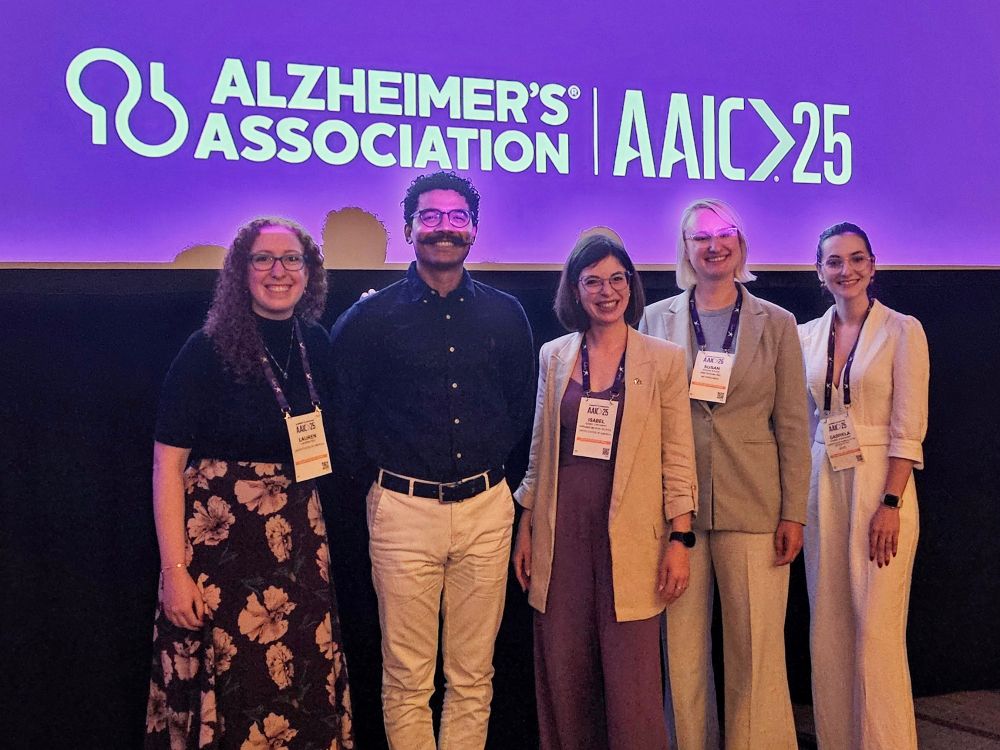
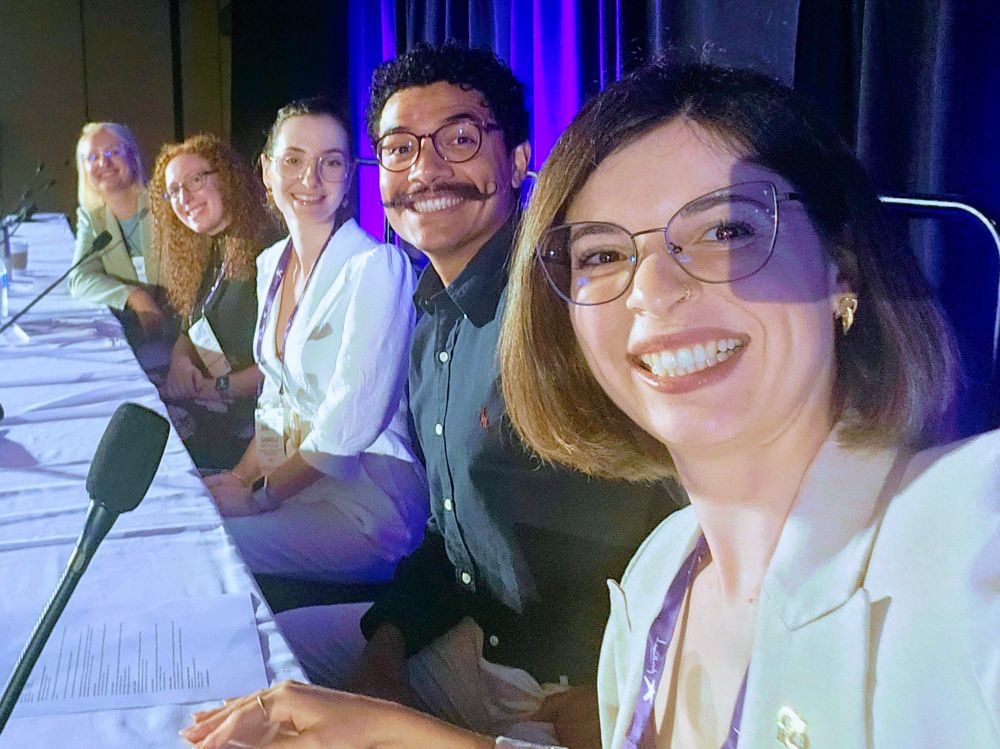
July 28, 2025 at 11:13 AM
Proud of our session at #AAIC25 yesterday, "Molecular Basis of Cognitive Resilience". 💜
We really are trying to bring the field together, and I think we did a great job! 👏🏻
Thank you to the audience for making the Q&A so stimulating. 🤩
If you missed it, the recording is available online.
We really are trying to bring the field together, and I think we did a great job! 👏🏻
Thank you to the audience for making the Q&A so stimulating. 🤩
If you missed it, the recording is available online.
@baldassogabi.bsky.social , the youngest speaker in our session - who just started her PhD - did such a great job at #AAIC25. ⭐ I'm excited to see this superstar's science & career unfold. 🤩 Well done Gabriela 👏🏻
Today was my very first oral presentation, and I couldn't be happier. I felt a mix of emotions and nervousness, but also excitement about the science being discussed! Thank you, @alzassociation.bsky.social @zimmerneurolab.bsky.social @isabelscst.bsky.social for making it possible #AAIC25
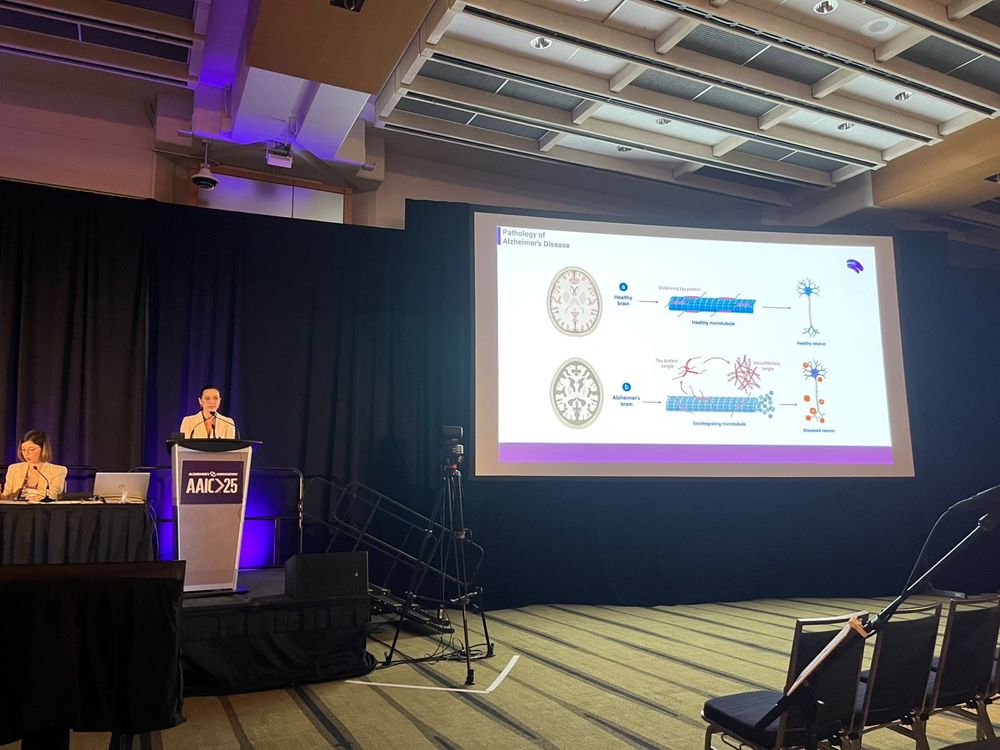
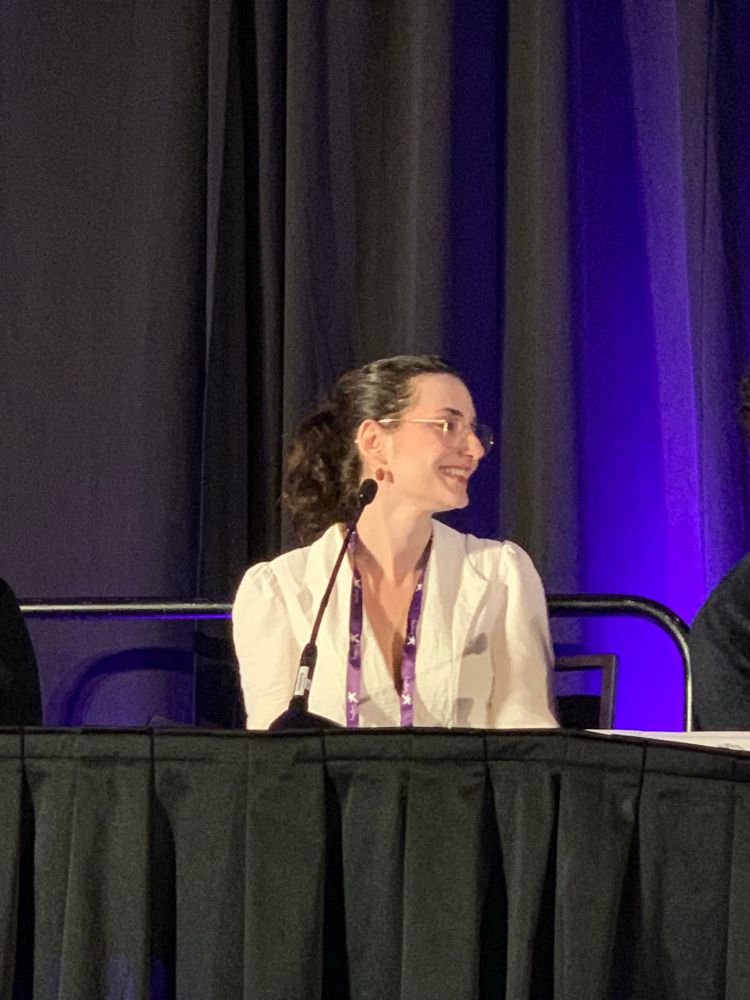
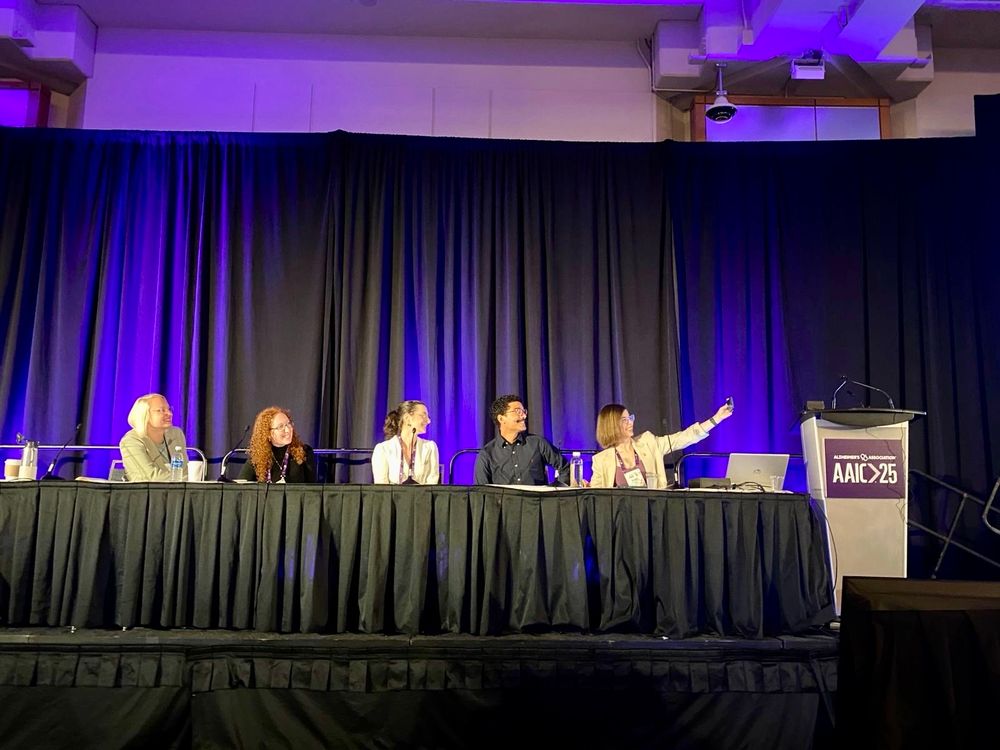
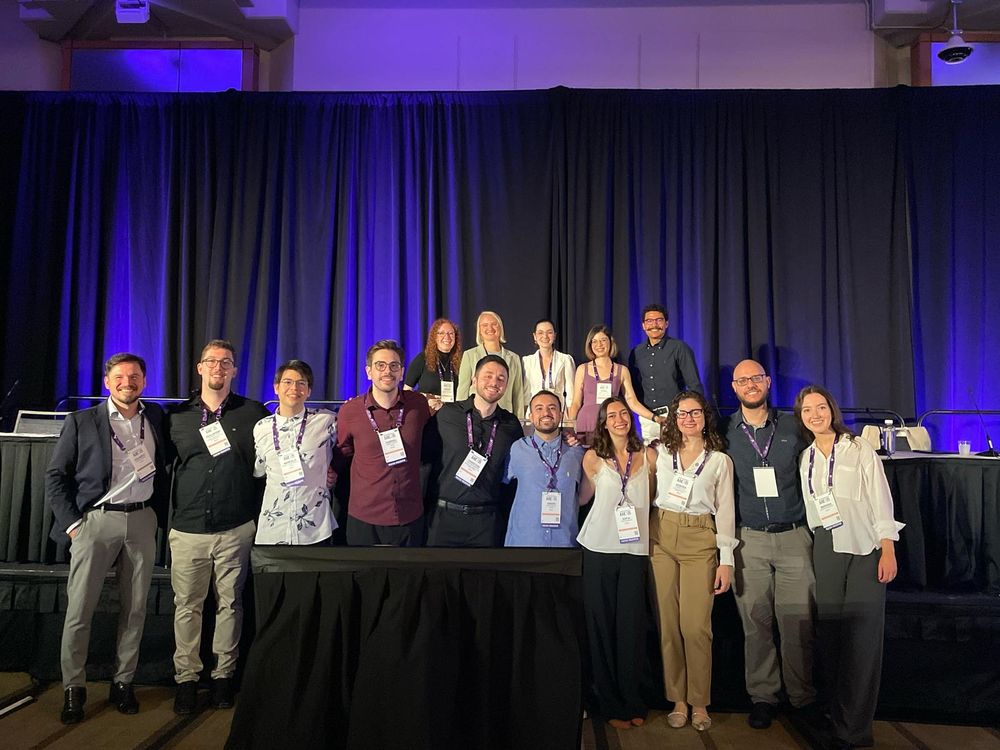
July 28, 2025 at 10:45 AM
@baldassogabi.bsky.social , the youngest speaker in our session - who just started her PhD - did such a great job at #AAIC25. ⭐ I'm excited to see this superstar's science & career unfold. 🤩 Well done Gabriela 👏🏻
Reposted by Isabel Castanho, PhD
“It’s okay to feel a bit lost – everyone does.” Read Adam Smith’s @betterresearch.bsky.social take on how to make the most of #AAIC25, whether attending in person or online.
www.dementiaresearcher.nihr.ac.uk/blog-aaic-20...
www.dementiaresearcher.nihr.ac.uk/blog-aaic-20...
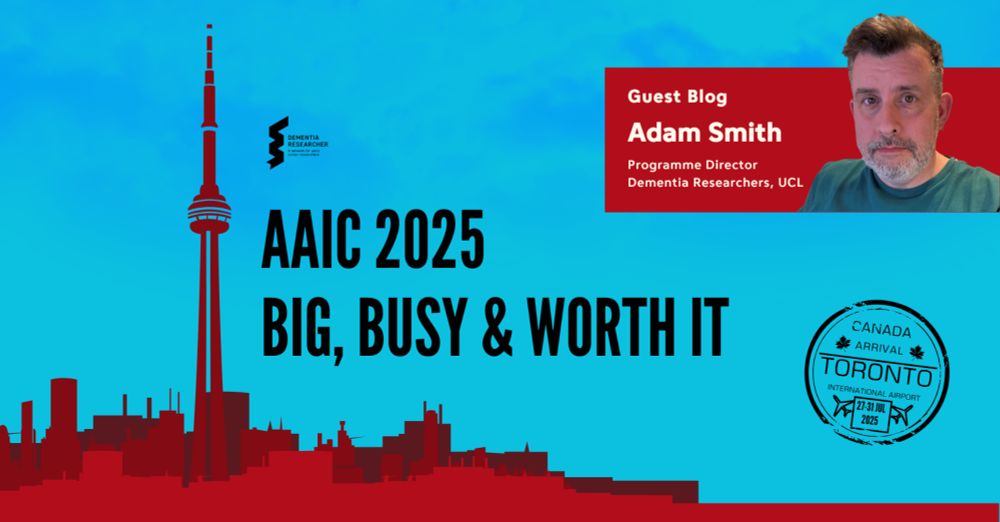
Adam Smith - Blog – AAIC 2025, Big, Busy and Worth It
Adam Smith shares reflections and tips for navigating AAIC 2025 in Toronto – a conference that’s big, full on, and genuinely worth the effort.
www.dementiaresearcher.nihr.ac.uk
July 14, 2025 at 8:50 AM
“It’s okay to feel a bit lost – everyone does.” Read Adam Smith’s @betterresearch.bsky.social take on how to make the most of #AAIC25, whether attending in person or online.
www.dementiaresearcher.nihr.ac.uk/blog-aaic-20...
www.dementiaresearcher.nihr.ac.uk/blog-aaic-20...
Have you added the session "Molecular Basis of Cognitive Resilience" to your schedule on the #AAIC25 app yet?
We have a fantastic lineup of speakers! ⭐
See you there? 🤓
We have a fantastic lineup of speakers! ⭐
See you there? 🤓
Less than 2 weeks for #AAIC25! 😱🤩💜
I'm preparing my schedule & getting excited about so many of the sessions! 😃 Have you added this one to your schedule yet? 🧠🌸 Molecular Basis of Cognitive Resilience
✨ Sunday 9 AM Room 106 ✨
I hear it's going to be great! 😉
I'm preparing my schedule & getting excited about so many of the sessions! 😃 Have you added this one to your schedule yet? 🧠🌸 Molecular Basis of Cognitive Resilience
✨ Sunday 9 AM Room 106 ✨
I hear it's going to be great! 😉

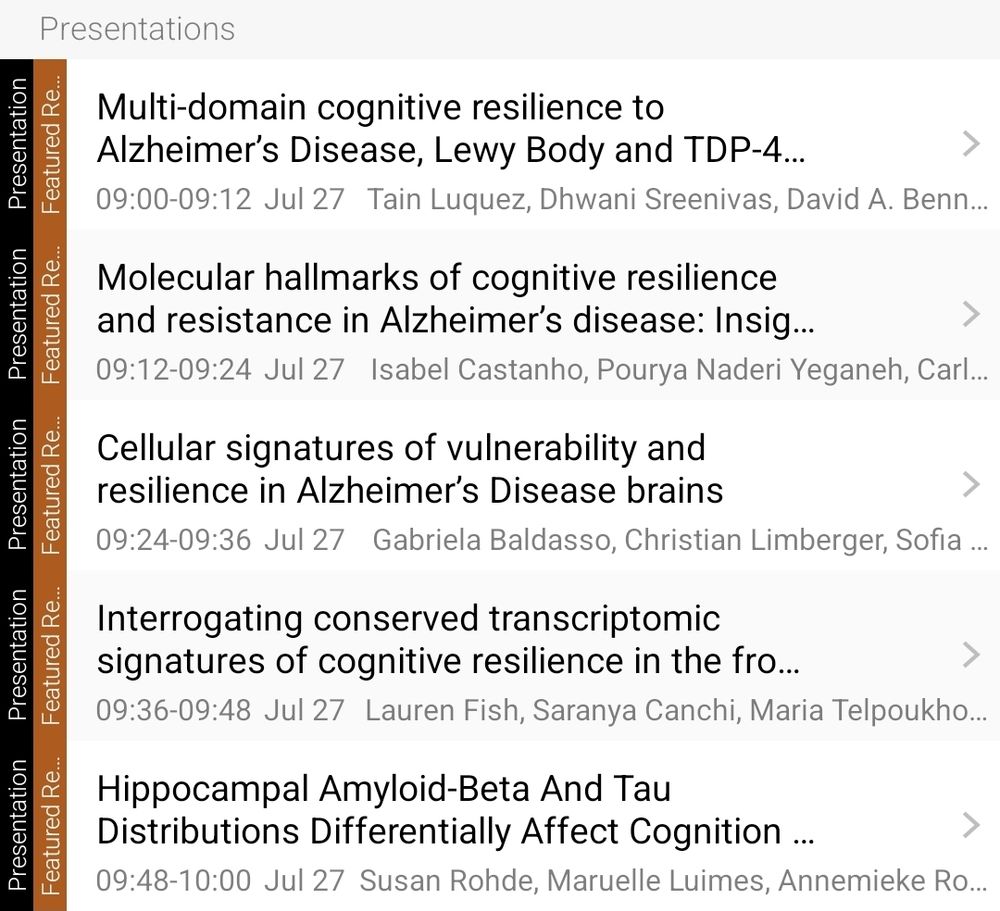
July 25, 2025 at 11:11 PM
Have you added the session "Molecular Basis of Cognitive Resilience" to your schedule on the #AAIC25 app yet?
We have a fantastic lineup of speakers! ⭐
See you there? 🤓
We have a fantastic lineup of speakers! ⭐
See you there? 🤓
Reposted by Isabel Castanho, PhD
Very excited to present at the @istaart.bsky.social Skills Workshop titled Amplifying Your Scientific Profile Through Social Media at #AAIC25!
Come learn some great skills from some amazing speakers @isabelscst.bsky.social, Lisa Koen, and myself!
⏰Wednesday July 30 (12:30-1:45pm)
📍603-605
Come learn some great skills from some amazing speakers @isabelscst.bsky.social, Lisa Koen, and myself!
⏰Wednesday July 30 (12:30-1:45pm)
📍603-605
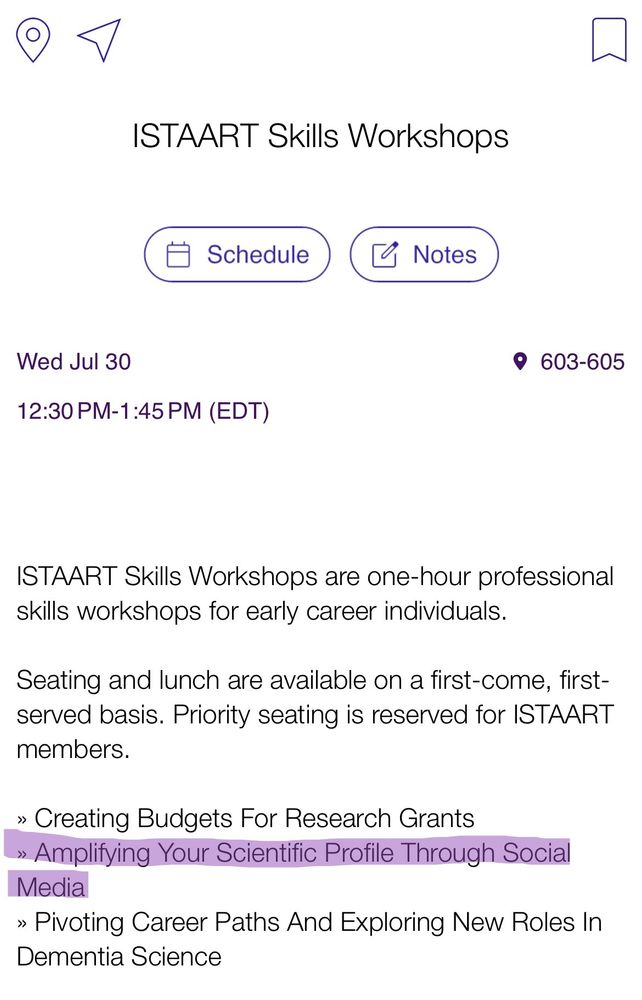
July 25, 2025 at 6:26 PM
Very excited to present at the @istaart.bsky.social Skills Workshop titled Amplifying Your Scientific Profile Through Social Media at #AAIC25!
Come learn some great skills from some amazing speakers @isabelscst.bsky.social, Lisa Koen, and myself!
⏰Wednesday July 30 (12:30-1:45pm)
📍603-605
Come learn some great skills from some amazing speakers @isabelscst.bsky.social, Lisa Koen, and myself!
⏰Wednesday July 30 (12:30-1:45pm)
📍603-605
Reposted by Isabel Castanho, PhD
Come and check out this interesting session on #resilience on the very first morning of #AAIC25 in #Toronto or online! I will be talking about cognitive resilience in centenarians! 💯🧠
Less than 2 weeks for #AAIC25! 😱🤩💜
I'm preparing my schedule & getting excited about so many of the sessions! 😃 Have you added this one to your schedule yet? 🧠🌸 Molecular Basis of Cognitive Resilience
✨ Sunday 9 AM Room 106 ✨
I hear it's going to be great! 😉
I'm preparing my schedule & getting excited about so many of the sessions! 😃 Have you added this one to your schedule yet? 🧠🌸 Molecular Basis of Cognitive Resilience
✨ Sunday 9 AM Room 106 ✨
I hear it's going to be great! 😉


July 23, 2025 at 10:32 AM
Come and check out this interesting session on #resilience on the very first morning of #AAIC25 in #Toronto or online! I will be talking about cognitive resilience in centenarians! 💯🧠
POV of commuting to work this week, ahead of #AAIC25
First pic: preparing my Sunday presentation on #cognitiveresilience to #Alzheimer on my way to work
Second pic: preparing slides for the Wednesday @istaart.bsky.social workshop on using #socialmedia to grow professionally
First pic: preparing my Sunday presentation on #cognitiveresilience to #Alzheimer on my way to work
Second pic: preparing slides for the Wednesday @istaart.bsky.social workshop on using #socialmedia to grow professionally


July 22, 2025 at 9:08 PM
POV of commuting to work this week, ahead of #AAIC25
First pic: preparing my Sunday presentation on #cognitiveresilience to #Alzheimer on my way to work
Second pic: preparing slides for the Wednesday @istaart.bsky.social workshop on using #socialmedia to grow professionally
First pic: preparing my Sunday presentation on #cognitiveresilience to #Alzheimer on my way to work
Second pic: preparing slides for the Wednesday @istaart.bsky.social workshop on using #socialmedia to grow professionally
Reposted by Isabel Castanho, PhD
I wrote a blog for anyone going to #AAIC25 for the first time or thinking of attending online.
www.dementiaresearcher.nihr.ac.uk/blog-aaic-20...
www.dementiaresearcher.nihr.ac.uk/blog-aaic-20...
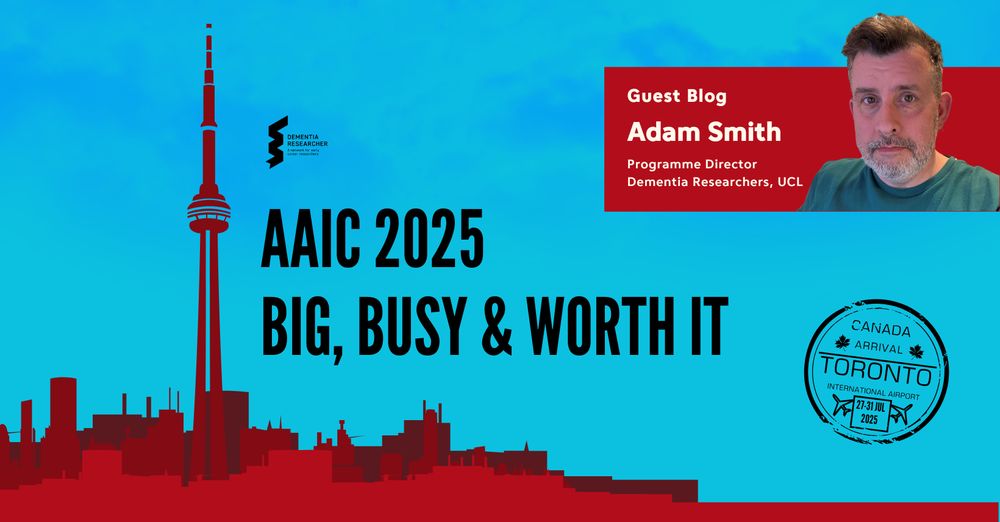
Adam Smith - Blog – AAIC 2025, Big, Busy and Worth It
Adam Smith shares reflections and tips for navigating AAIC 2025 in Toronto – a conference that’s big, full on, and genuinely worth the effort.
www.dementiaresearcher.nihr.ac.uk
July 14, 2025 at 11:51 AM
I wrote a blog for anyone going to #AAIC25 for the first time or thinking of attending online.
www.dementiaresearcher.nihr.ac.uk/blog-aaic-20...
www.dementiaresearcher.nihr.ac.uk/blog-aaic-20...

